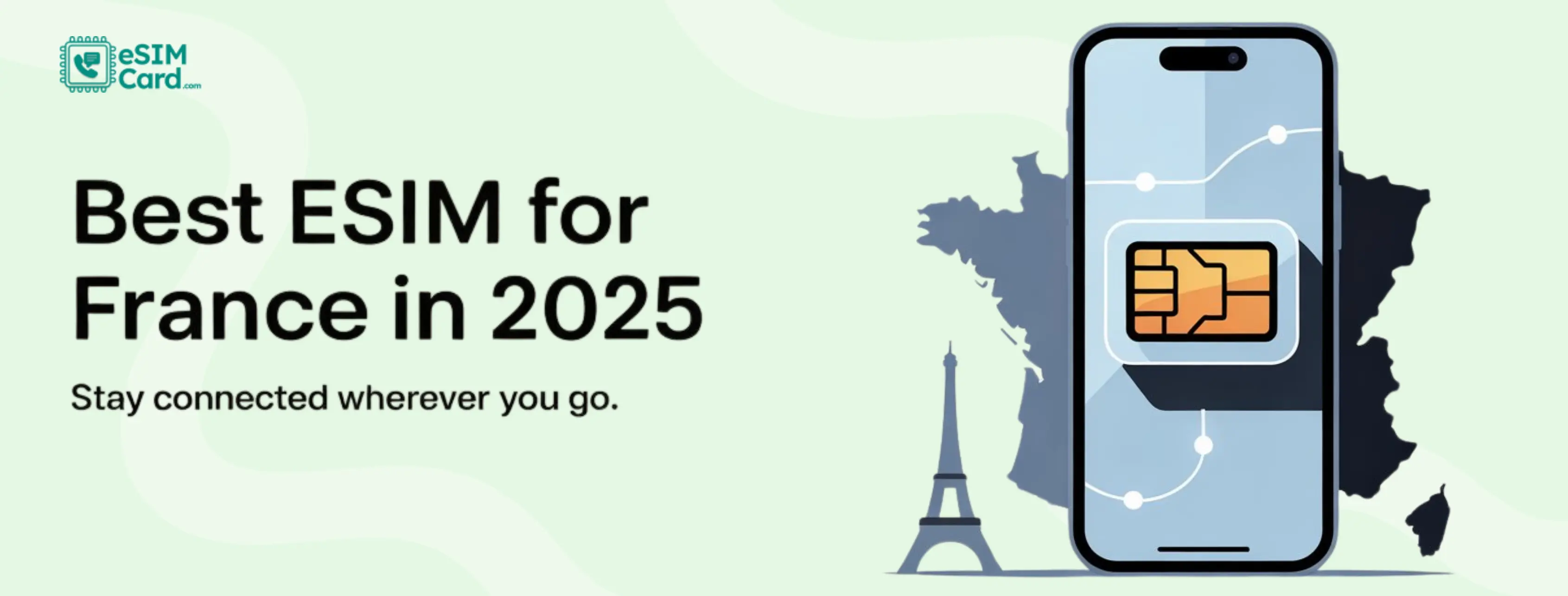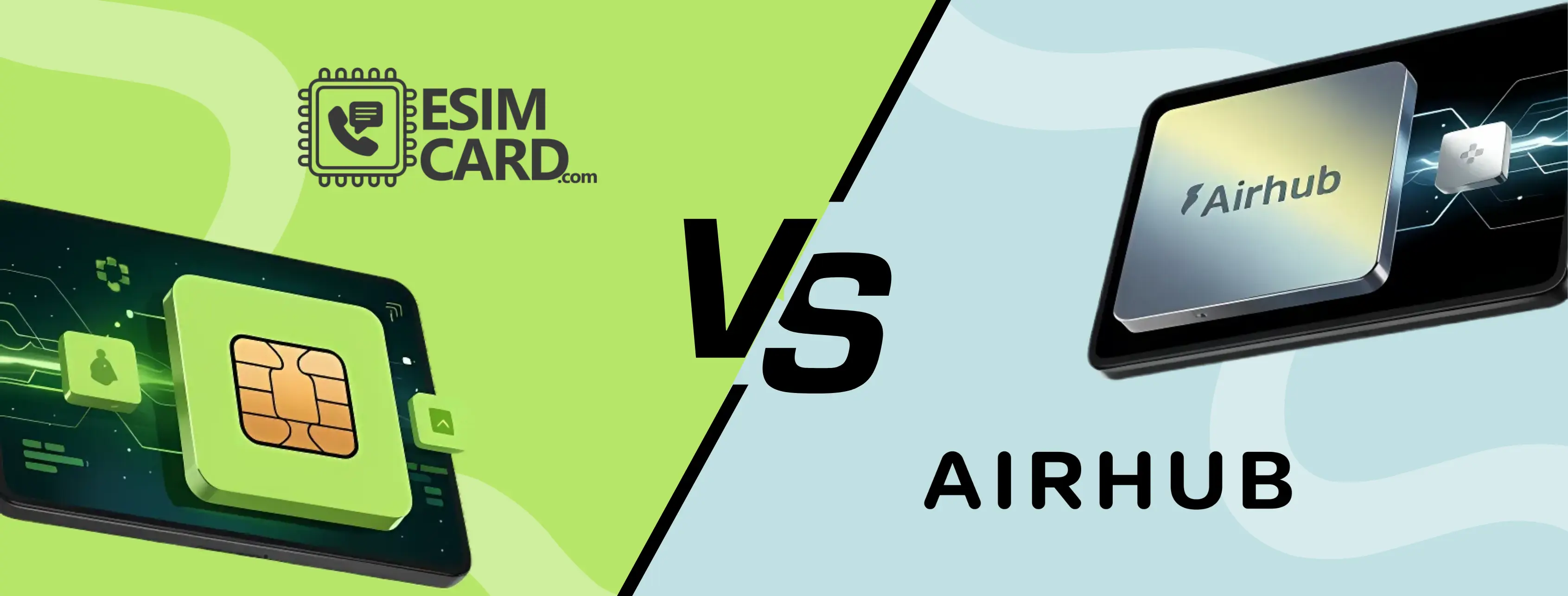
Why You Should Switch to eSIM? | Reasons & Switching Benefits
Thinking of switching to an eSIM? See how it could enhance your mobile usage. As someone who recently made the switch, I can assure you, it's a decision that simplifies your digital life. In my journey from a physical SIM card to an eSIM, I discovered the ease and flexibility it offers, especially for those who travel frequently. Let me share why this switch might be the smart choice for you too. Before switching from a physical sim card to eSIM we should know the factors and working strategies of eSIM, how it actually works?
How does an eSIM work?
An eSIM is a tiny chip that consists of two main factors. The first one is a “secure element” that stores your subscriber information digitally. This information contains every detail and setting like mobile number, service subscription details and your carrier network identifiers. The second and major part is the “logical element” that provides communication between the device and network operators. The process of eSIM communication with these servers through cellular network and device depending on the availability. Creating this connection requires a verification and authorization process, followed by implementing encryption protocols. These measures ensure the protection of customer data. Once you finish this process, you can access the various services you subscribed to and benefit from superior signals compared to regular plastic SIM cards.
Reasons you should switch to eSIM:
As the world evolves, this new tiny sim chip technology is going to be popular among smartphones and other mobile users, it is not difficult to be considered its proficient way that eSIM makes life easier with its several benefits.
Convenience:
eSIM offers excellent convenience for its users. Here's how:
- Easy Setup: Activating an eSIM is simple. No physical SIM card is needed.
- Switch Services Quickly: Change carriers without swapping SIM cards.
- Travel Friendly: Easily switch to local networks when traveling.
- No Physical SIM Issues: Say goodbye to lost or damaged SIM cards.
- Space-saving: eSIMs free up space in phones for other features.
- Multiple Plans: Hold more than one plan on a single device.
- Instant Connectivity: Get connected faster without waiting for a physical SIM.
Flexibility:
One of the most admirable benefits of using an eSIM is its flexibility feature. By using an eSIM, you can switch carriers easily. This is great for travelers. You don't need to swap physical SIM cards. Simply select a new eSIM plan on your mobile device. This means less hassle and no need for multiple SIMs. eSIMs also make it easy to manage multiple numbers. You can have a personal and work number on one device.
Cost Savings on International Travel
One of the most tangible benefits of eSIMs is the significant reduction in international roaming charges. Employees can easily switch to local carriers when traveling abroad, avoiding the hefty fees typically associated with international roaming on traditional SIM cards.
Eco-Friendly
eSIMs contribute to a greener, more sustainable business practice by eliminating the need for plastic SIM cards. Additionally, they allow for sleeker and more compact device designs, as the space for a SIM card tray is no longer necessary.
Seamless Integration with IoT Devices
As the world evolves efficiently, eSIMs offer seamless integration with a range of IoT devices. This connectivity is crucial for businesses leveraging smart devices for data collection, monitoring, and automation.
How to download eSIM from eSIMCard
Here how you can download your eSIM from eSIMCard
- The first and most considerable thing is your device must be unlocked and eSIM compatible.
- Go to the eSIMCard website or download the eSIMCard app for iOS & Android.
- Select an eSIM plan (You can select different eSIM from local, regional and global eSIM plans according to your need)
- Follow the instructions to download & install the plan.
- Connect to a local network when you reach your desired destination.
Main differences between eSIMs and normal SIMs
eSIMs (embedded SIMs) and traditional SIM cards differ primarily in their physical form and functionality. An eSIM is integrated into the device itself and cannot be physically removed, unlike a traditional SIM card which is a removable component. This embedded nature of eSIMs allows for several distinct differences:
- Switching Providers: With eSIMs, changing network providers or plans can be done remotely, a process that is more convenient than the manual swapping of physical SIM cards required with traditional SIMs.
- Data Retention: When switching carriers, eSIMs allow all stored data to remain in the device, ensuring continuity. In contrast, traditional SIM cards often necessitate manual data transfer, with a potential risk of data loss.
- Storage Capacity: The storage space of eSIMs generally depends on the device's specifications and is often larger compared to traditional SIMs, which have inherent limitations in their storage capacity.
Does your device support eSIM? Check Compatibility
In 2024, the trend towards eSIM-compatible phones is on a significant rise, driven by user convenience and the demands of technology enthusiasts. The launch graph for eSIM-compatible phones shows a clear upward trajectory.
As more people adopt eSIM-compatible phones, it's important to know which devices support eSIMs. Currently, many smartphone manufacturers are incorporating eSIM technology into their devices. This includes a range of models from flagship to mid-range, catering to various user needs and preferences.
However, the availability of eSIM-compatible devices is not uniform worldwide. While many regions, especially those with advanced technological infrastructure, have a wide range of eSIM-enabled phones, some areas may lag. This discrepancy could be due to several factors, including regional market demands, network infrastructure readiness, and regulatory environments.
Conclusion:
eSIM technology enhances mobile usage with its convenience, flexibility, and cost-effectiveness, especially for international travel. It's increasingly adopted in smartphones across various ranges, though availability may vary globally. eSIMs promise a more integrated, efficient future in connectivity.









